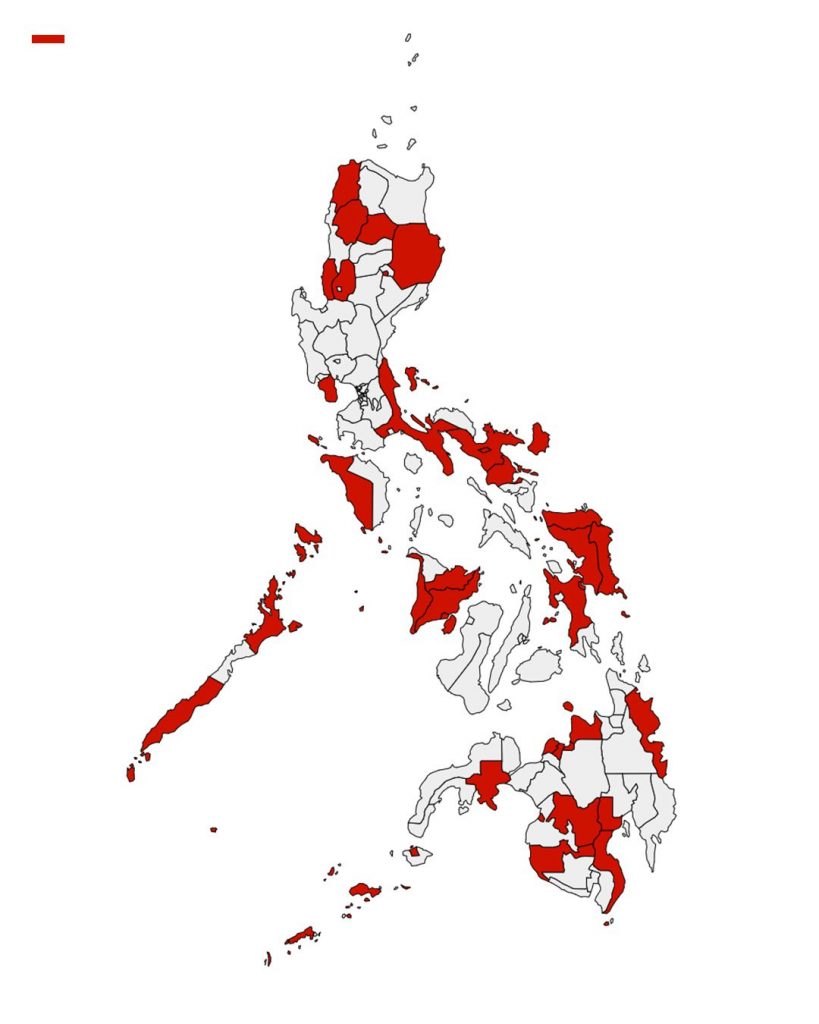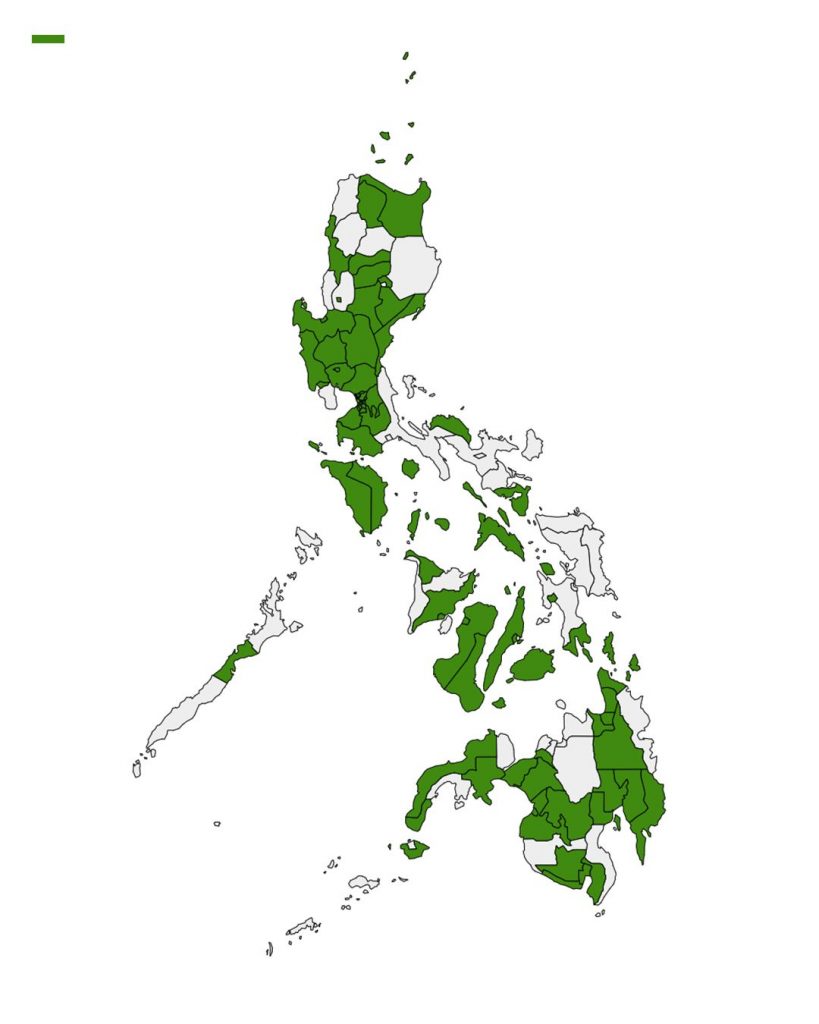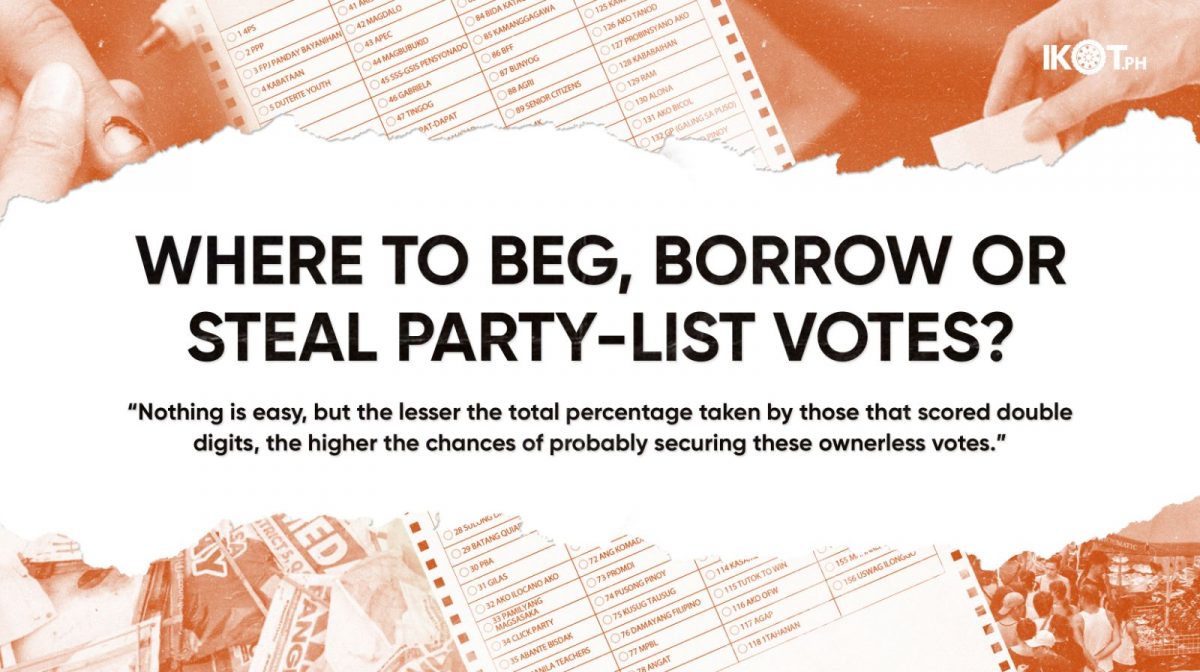It is not easy to capture a double-digit percentage of the party-list votes of an entire province or city.
Voters only get to pick one, and only one, among hundreds of party-list groups on the ballot (156 party-list groups to be exact for the last May 12, 2025 midterm elections). Meaning to say, each party-list group only has a less than 1% chance of being selected by a voter, all other things being equal, or with other conditions remaining the same.
Of course, there is a 90-day official campaign period, although most if not all party-list groups already begin campaigning much, much, much earlier. What the party-list groups do, and how, and when, changes the game entirely. No more equal. No more the same. The race is on.
“What the party-list groups do, and how, and when, changes the game entirely.”
In this study, the IKOT.PH Strategic Research Team collected and collated available data on all party-list groups that obtained double digits in all provinces and independent cities nationwide, including the 16 cities and one municipality in the National Capital Region (NCR). Here we will see which areas are 90% taken, 80% taken, 70% taken, 60% taken, 50% taken, and so on, and so forth, by party-list groups that obtained a double-digit percentage of the party-list votes of an entire province or city. This excludes all party-list groups that merely obtained single digits, from 9.9% down to 1.0 % and even lower. Using the available data, then, we can already identify which areas to avoid and which areas to target in the 2028 party-list elections.
AREAS TO AVOID IN 2028
Just between one to three party-list groups captured more than 50% of the party-list votes in almost 40% of all the provinces in the country.
“Just between one to three party-list groups captured more than 50% of the party-list votes in almost 40% of all the provinces in the country.”
One party-list group captured more than 50% of the party-list votes in nine provinces and two independent cities.
Two party-list groups captured more than 50% of the party-list votes in 17 provinces and one independent city.
Three party-list groups captured more than 50% of the party-list votes in four provinces, two independent cities, and one municipality in the NCR.
Four party-list groups captured more than 50% of the party-list votes in one province.
In sum, 50% of the party-list votes in 31 provinces, 5 independent cities, and one municipality in the NCR are taken.
“In sum, 50% of the party-list votes in 31 provinces, 5 independent cities, and one municipality in the NCR are taken.”
Therefore, these 37 areas are the hardest to penetrate for both new and old party-list groups alike. Unless if a party-list group is going to exert extraordinary effort in these areas in terms of political capital and financial resources, it is suggested that they be avoided altogether.
MORE THAN 90% TAKEN
| PROVINCE | INDEPENDENT CITY | NCR |
| 93% Sulu (2) |
MORE THAN 80% TAKEN
| PROVINCE | INDEPENDENT CITY | NCR |
| 84% Abra (1) | ||
| 84% Misamis Occidental (1) | ||
| 81% Davao Occidental (1) |
MORE THAN 70% TAKEN
| PROVINCE | INDEPENDENT CITY | NCR |
| 76% Eastern Samar (2) | 71% City of Tacloban (1) |
MORE THAN 60% TAKEN
| PROVINCE | INDEPENDENT CITY | NCR |
| 69% Benguet (4) | 62% City of Davao (2) | |
| 68% Quezon (2) | ||
| 65% Albay (2) | ||
| 64% Ilocos Norte (2) | ||
| 61% Samar (2) | ||
| 61% Sultan Kudarat (1) |
MORE THAN 50% TAKEN
| PROVINCE | INDEPENDENT CITY | NCR |
| 59% Catanduanes (2) | 58% City of Naga (3) | 52% Municipality of Pateros (3) |
| 59% Surigao del Sur (3) | 58% City of Cagayan de Oro (3) | |
| 58% Guimaras (1) | 51% Iloilo City (1) | |
| 57% La Union (2) | ||
| 56% Camarines Sur (2) | ||
| 56% Leyte (1) | ||
| 56% Northern Samar (2) | ||
| 56% Camiguin (2) | ||
| 55% Bataan (1) | ||
| 54% Tawi-Tawi (3) | ||
| 53% Isabela (1) | ||
| 53% Capiz (2) | ||
| 53% Antique (3) | ||
| 53% Davao del Sur (2) | ||
| 53% Cotabato (2) | ||
| 52% Kalinga (2) | ||
| 51% Palawan (2) | ||
| 51% Misamis Oriental (3) | ||
| 50% Zamboanga del Sur (1) |

To reiterate, these 37 areas are the hardest to penetrate for both new and old party-list groups alike. Unless if a party-list group is going to exert extraordinary effort in these areas in terms of political capital and financial resources, it is suggested that they be avoided altogether.
AREAS TO TARGET IN 2028
In four provinces, not a single party-list group scored in double digits.
| PROVINCE | INDEPENDENT CITY | NCR |
| 7.5% Nueva Vizcaya | ||
| 8.9% Aurora | ||
| 9.6% Romblon | ||
| 9.8% Occidental Mindoro |
In eight provinces, two independent cities, and seven cities in the NCR, less than 20% of the party-list votes are taken by those that scored in double digits.
| PROVINCE | INDEPENDENT CITY | NCR |
| 10% Quirino (1) | 13% City of Cebu (1) | 13% City of Malabon (1) |
| 10% Siquijor (1) | 15% City of Angeles (1) | 14% City of Caloocan (1) |
| 13% Laguna (1) | 15% Manila (1) | |
| 13% Rizal (1) | 16% City of Parañaque (1) | |
| 14% Tarlac(1) | 18% City of San Juan (1) | |
| 14% Bulacan(1) | 19% Marikina (1) | |
| 14% Agusan del Sur (1) | 19% Pasig (1) | |
| 19% Davao Oriental (1) |
In 15 provinces, three independent cities, and five cities in the NCR, less than 30% of the party-list votes are taken by those that scored in double digits.
| PROVINCE | INDEPENDENT CITY | NCR |
| 20% Oriental Mindoro (1) | 23% City of Baguio (2) | 20% City of Makati (1) |
| 22% Negros Occidental (1) | 23% City of Olongapo (2) | 26% City of Las Piñas (2) |
| 24% Cagayan (2) | 22% City of Zamboanga (1) | 27% City of Navotas (2) |
| 24% Zamboanga del Norte (1) | 27% City of Taguig (2) | |
| 24% Sarangani (1) | 28% Pasay City (2) | |
| 25% Marinduque (1) | ||
| 25% Maguindanao del Norte (2) | ||
| 26% Batanes (1) | ||
| 26% Zambales (1) | ||
| 26% Batangas (2) | ||
| 26% Basilan (2) | ||
| 27% Camarines Norte (1) | ||
| 27% Dinagat Islands (1) | ||
| 28% Zamboanga del Sur (2) | ||
| 29% Maguindanao del Sur (1) |
In 15 provinces, four independent cities, and two cities in the NCR, less than 40% of the party-list votes are taken by those that scored in double digits.
| PROVINCE | INDEPENDENT CITY | NCR |
| 31% Nueva Ecija (2) | 30% City of Butuan (2) | 30% Quezon City (2) |
| 31% Negros Oriental (1) | 31% City of Lapu-Lapu (2) | 33% City of Mandaluyong (2) |
| 31% Davao del Norte (2) | 34% City of Bacolod (1) | |
| 32% Cavite (2) | 35% City of Cotabato (2) | |
| 33% Pampanga (2) | ||
| 35% Ifugao (2) | ||
| 35% Aklan (1) | ||
| 35% Lanao del Norte (3) | ||
| 36% Bohol (3) | ||
| 36% Cebu (2) | ||
| 36% South Cotabato (1) | ||
| 38% Pangasinan (3) | ||
| 38% Apayao (1) | ||
| 38% Davao de Oro (2) | ||
| 39% Masbate (2) |
In nine provinces, six independent cities, and two cities in the NCR, less than 50% of the party-list votes are taken by those that scored in double digits.
| PROVINCE | INDEPENDENT CITY | NCR |
| 40% Ilocos Sur (1) | 40% City of Santiago (2) | 43% City of Valenzuela (2) |
| 40% Lanao del Sur (3) | 42% City of General Santos (3) | 44% City of Muntinlupa (2) |
| 42% Mountain Province (1) | 44% City of Puerto Princesa (1) | |
| 43% Surigao del Norte (3) | 47% City of Iligan (2) | |
| 43% Biliran (1) | 48% City of Dagupan (2) | |
| 45% Sorsogon (1) | 48% Ormoc City (2) | |
| 45% Iloilo (1) | ||
| 47% Southern Leyte (2) | ||
| 49% Agusan del Norte (3) |
In sum, in 51 provinces, 15 independent cities, and 16 cities in the NCR, less than 50% of the party-list votes are taken by those that scored double digits.
“In sum, in 51 provinces, 15 independent cities, and 16 cities in the NCR, less than 50% of the party-list votes are taken by those that scored double digits.”

Therefore, these 82 areas are the more vulnerable areas for both attempting and incumbent party-list groups looking to get substantial votes for themselves. Nothing is easy, but the lesser the total percentage taken by those that scored double digits, the higher the chances of probably securing these ownerless votes, with the obvious initial targets being the four provinces where not a single party-list group scored in double digits, then, by order of priority, those with less than 20% taken, then those with less than 30% taken, then those with less than 40% taken, then those with less than 50% taken.
Now you know. So go ahead.



